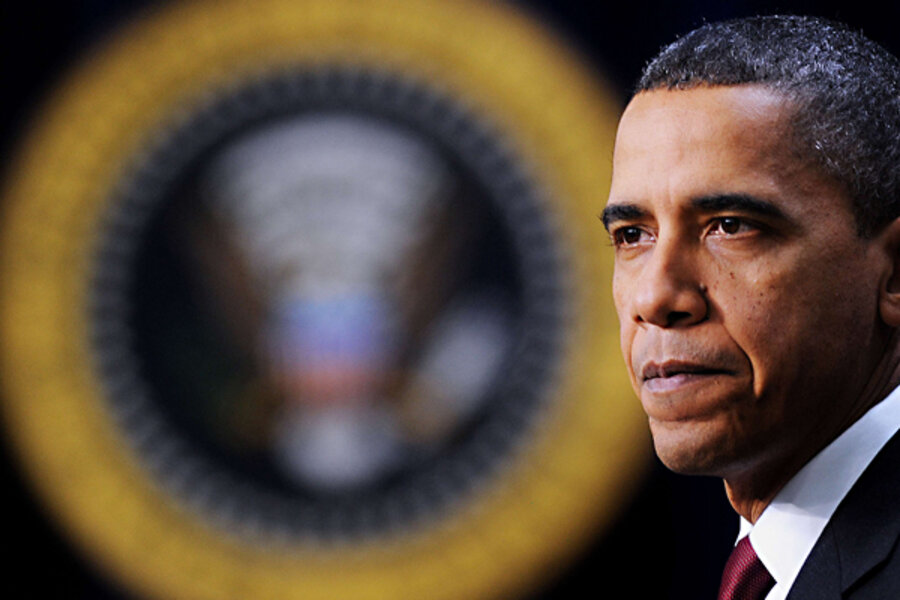Nine states don't give maximum unemployment benefits: Does yours?
Loading...
| New York
On December 17th, Congress reauthorized emergency benefits for unemployed workers, giving them an extra 13 to 20 weeks of unemployment compensation.
But before Uncle Sam can cut the checks – the extended benefits are fully funded by the federal government, not the states – each state needs to pass legislation allowing the legal distribution of the funds.
Nine states have not done this yet.
On Monday, in a mathematical projection, the National Employment Law Project said that as a result of those nine states not passing legislation, some 236,000 workers could lose out on $876 million in unemployment benefits. In most cases, the unemployed will miss out on an extra 13 weeks of payments. But, in two states, Louisiana and Mississippi, the jobless would qualify for an extra 20 weeks.
“With full federal funding of this program assured through the end of 2011, the decision to activate Extended Benefits programs in these nine states should be an easy one,” says George Wentworth, a senior staff attorney at NELP in New York.
“These benefits will help workers to hang on to their homes and feed their families, as they struggle to find new employment in this terrible job market,” he says.
According to NELP, the nine states that have not acted yet are: Arkansas, Iowa, Louisiana, Maryland, Mississippi, Montana, Oklahoma, Utah and Wyoming.
So far, 37 states and the District of Columbia have passed the legislation that will ensure the jobless in their states will receive the extra 13 or 20 weeks of benefits.
If a state’s unemployment level is at least 6.5 percent, its workers are eligible for 13 weeks; if the unemployment level is 8 percent or higher, jobless workers may get an extra 20 weeks.
In addition, four states have had low unemployment for an extended period, so are not eligible for extended benefits: North Dakota (3.8 percent unemployment rate), Nebraska (4.4 percent), South Dakota (4.6 percent), and Hawaii (6.4 percent).
These four states have not adopted legislation that would trigger federal benefits if their unemployment were to rise to the threshold.
Some states may not have acted because, in the past, Congress extended the benefits for only short periods of time, says Mr. Wentworth. States "would run the risk of having to shut the program down shortly after starting it up,” he says.
Other state governors may have philosophical objections to supporting legislation adding benefits. For example, in Wyoming, where the legislature would help some 5,689 unemployed residents, Gov. Matt Mead (R) is “actively” watching the pending legislation for "the long term impact to employers who fund our unemployment insurance system,” says Renny MacKay, a spokesman for the governor.
In regular unemployment benefits, which last 26 weeks in all states, the costs are split 50-50 between the state and federal government. Private employers pay into the state’s system to fund it.
However, as Wentworth notes, the extended benefits program costs little to the state or its employers. “It is totally funded by the federal government – except for former employees of state and local governments. The states and municipalities have to pay dollar for dollar for [state employees'] extended benefits,” he says.
Maryland, one of the nine states that has yet to pass legislation, is working with the US Department of Labor to find out what legislation it needs to pass to qualify for the funds. says Shaun Adamec, press secretary for Gov. Martin O’Malley (D).
“We’re just at the beginning of our session (which runs from January to April), and this may well be a part of our legislation this year,” says Mr. Adamec. “We just need to finalize with DOL to make sure we know what needs to be in it.”
If the state does act, it would provide an estimated $182.6 million to 47,393 Maryland residents, who would receive an additional thirteen weeks of benefits, according to the NELP.
One resident who would qualify is Lisa Banks of Germantown, who was laid off from her job as an office manager in May 2009. She lost her unemployment benefits at the end of October.
Ms. Banks says she desperately needs the money.
“It would help me avoid losing my car, it would let me keep my electric on so I can keep taking classes on my computer, it would allow me to buy food,” says Banks, who says she has lost 35 pounds because she can’t afford groceries. “The unemployment checks at least allowed me to get the basic necessities. I don’t even have $2 in my pocket.”





